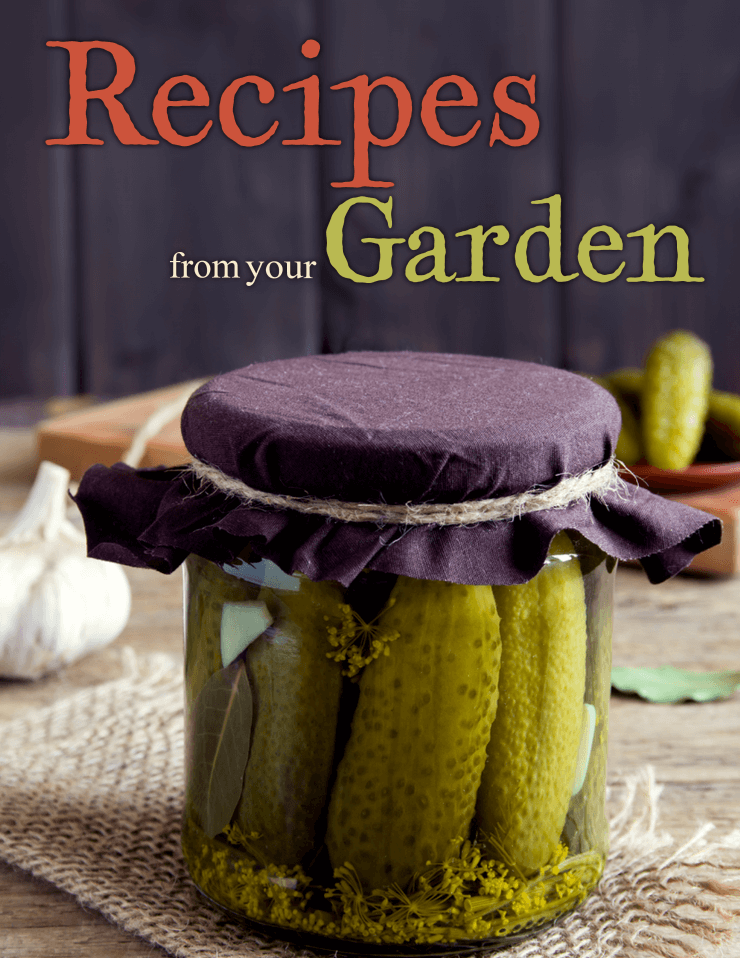
There’s something almost magical about growing edible flowers. I remember the first time I sprinkled bright nasturtium petals over a salad—the colors popped, the flavors surprised me, and honestly, it just felt fancy.
But what I love most is that these pretty little blooms aren’t just for show. They feed pollinators, deter pests, and, when you know how to use them, they can elevate your meals from simple to stunning.
In my garden, flowers don’t just bloom—they work. They support my veggies, invite beneficial bugs, and bring a sense of joy that’s hard to describe unless you’ve experienced it.
So if you’re looking to add beauty and function to your food garden, edible flowers are the way to go.
Let me share a few of my absolute favorites and how I use them both in the garden and the kitchen.
Discover 9 garden recipes spotlighting the delicious possibilities of home gardens—when you access the FREEBIE Recipes from Your Garden, right now!
Why Grow Edible Flowers?
Aside from the obvious visual appeal, edible flowers offer a whole host of benefits—many of which are often overlooked by traditional gardeners.
For starters, they’re magnets for pollinators.
Bees, butterflies, and even hummingbirds flock to the blooms, which means better fruit and vegetable production for you.
Certain flowers, like nasturtiums and marigolds, even act as natural pest deterrents.
Plus, they’re often drought-tolerant and thrive with minimal care.
And then there’s the fun part: bringing those flowers indoors and onto your plate.
A sprinkle of petals on a salad, a lavender-infused lemonade, or chive blossoms blended into butter—these little touches turn ordinary meals into something special.
If you’re like me and love finding multiple uses for every plant you grow, edible flowers are a no-brainer.
Top Edible Flowers to Grow and Enjoy
Here are some of the best edible flowers I grow in my own garden, along with tips on how to use them.
Nasturtiums
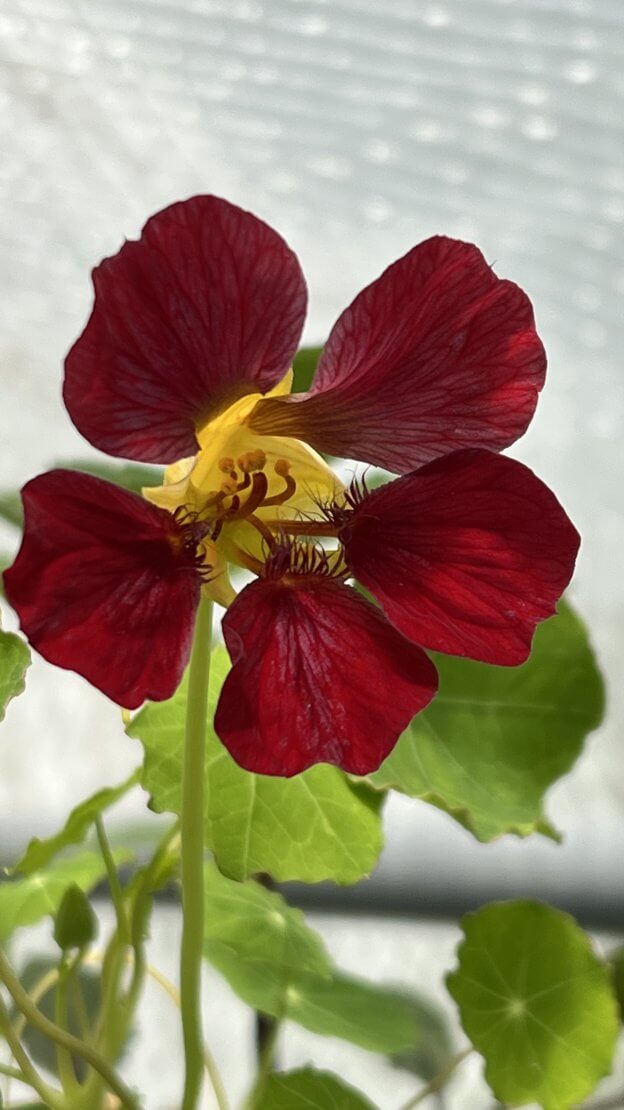
These cheerful flowers are the life of the party. With their vibrant reds, oranges, and yellows, nasturtiums are a visual delight—and they’ve got a peppery flavor that reminds me a bit of arugula.
How to grow: They thrive in poor soil, believe it or not, and don’t need much fussing over. Just sow seeds after your last frost and watch them take off. They’re great in borders or spilling over containers.
How to use: I love adding both the leaves and petals to salads. The flavor adds a zippy kick, and the colors are unbeatable. You can also stuff the whole flowers with soft cheese for a stunning appetizer.
I add the flowers and young leaves to butter—it really dresses it up! The butter is perfect for special events like tea parties, picnics, or even just to make a weekday dinner feel a little more special. Here’s how I make it.
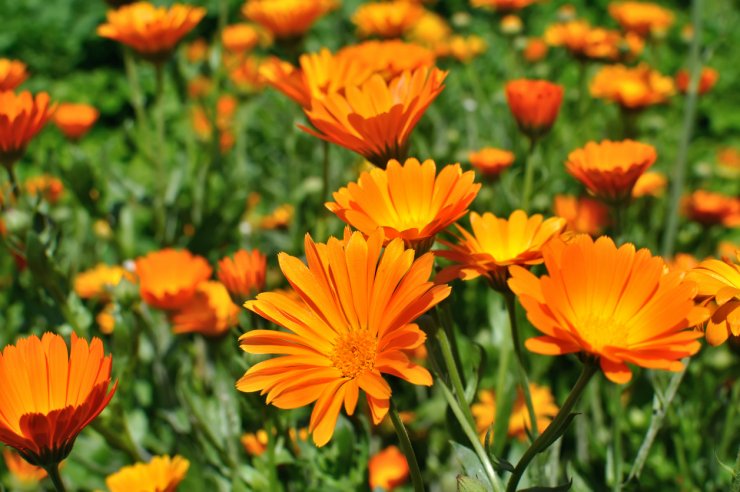
Calendula (Pot Marigold)
Calendula brings sunshine to the garden with its bright orange or yellow petals—and it’s one of the most useful flowers I grow.
How to grow: It’s super easy from seed and keeps blooming if you deadhead regularly. Calendula loves full sun and cooler temps.
How to use: The petals are slightly spicy and a bit earthy. I use them to color rice like saffron (they’re nicknamed “poor man’s saffron” for a reason). You can also steep them in oil for a soothing salve, though that’s a story for another time!
The petals are great added to icing—not just for a pop of color, but for a subtle, earthy flavor that pairs surprisingly well with sweet treats. You can also dry the petals to make a soothing herbal tea, or combine them with other edible flowers and a bit of sea salt to create a unique floral seasoning blend. It’s one of those “sprinkle on everything” mixes that’s delicious on meats, vegetables, eggs—you name it.

Borage
Borage has the prettiest blue star-shaped flowers and a light cucumber flavor that’s especially refreshing in summer.
While borage is edible, it’s best enjoyed occasionally and in small amounts—especially if you have liver concerns or take blood-thinning medications. As always, when in doubt, check with your healthcare provider.
How to grow: Borage grows fast and self-sows like crazy—so once you plant it, it often comes back on its own. Give it space because it does get big and bushy.
How to use: I love dropping the flowers into lemonade or freezing them into ice cubes. They’re also gorgeous as cake toppers.
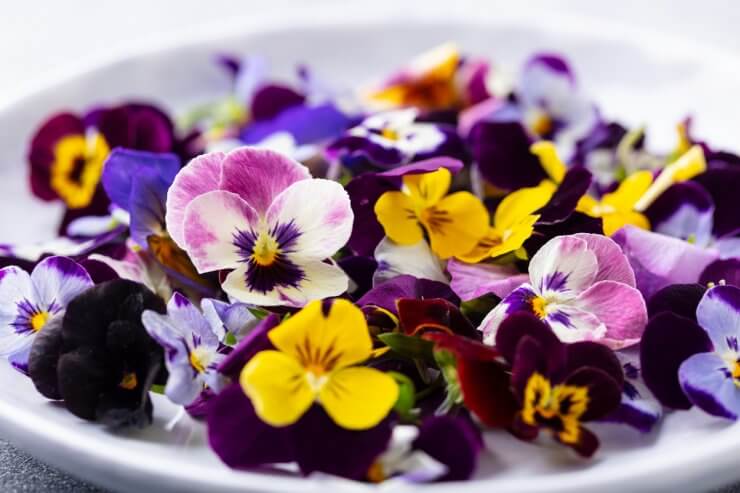
Violas, Pansies, and Johnny Jump-Ups
These are some of the first flowers to bloom in spring and last well into fall. Their flavor is mild—slightly sweet, slightly grassy—but their charm is off the charts.
How to grow: These do great in cooler weather and are perfect for container gardening. They love rich, moist soil and partial sun.
How to use: Press them into shortbread cookies or float them on top of cream soups. They’re also lovely on cupcakes or tucked into spring salads.
These delicate blooms can also be candied, turning them into charming edible decorations for cakes, cookies, or even a fancy cup of tea—perfect for weddings, tea parties, or anytime you want to add a little garden magic to your desserts.
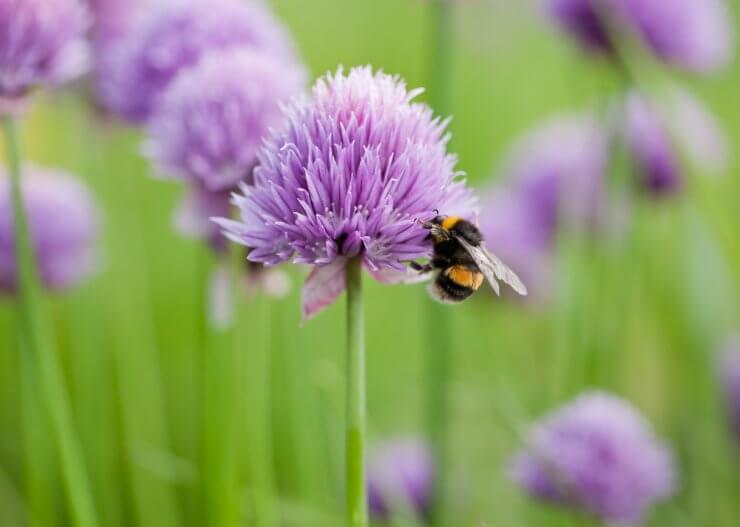
Chive Blossoms
Chives are a must-have herb in my kitchen, and when they bloom—oh my! Those purple puffballs aren’t just pretty; they’re packed with oniony flavor.
How to grow: Give chives a sunny spot and they’ll reward you year after year. Divide clumps every couple years to keep them healthy.
How to use: Infuse the blossoms in vinegar for a beautiful pink onion-flavored dressing, or mix them into softened butter with a pinch of salt for a delicious spread.

Lavender
This one’s a classic. Its strong, sweet-herbal aroma makes it perfect for both savory and sweet dishes—but go easy. A little goes a long way.
How to grow: Lavender likes well-drained soil and full sun. Don’t overwater. Prune after flowering to keep it neat.
How to use: I use it in shortbread, tea blends, or syrups for summer drinks. One of my favorites is lavender lemonade on a hot day.
Bee Balm (Monarda)

Bee balm is a pollinator magnet and a stunner in the garden with its bold red or pink blooms. It’s in the mint family, so it has a spicy, almost oregano-like flavor.
How to grow: It needs full sun and good air circulation to prevent powdery mildew. It spreads by rhizomes, so give it some room.
How to use: The petals make a tasty tea and pair well with fruit salads. You can also dry them and mix them into herbal tea blends.
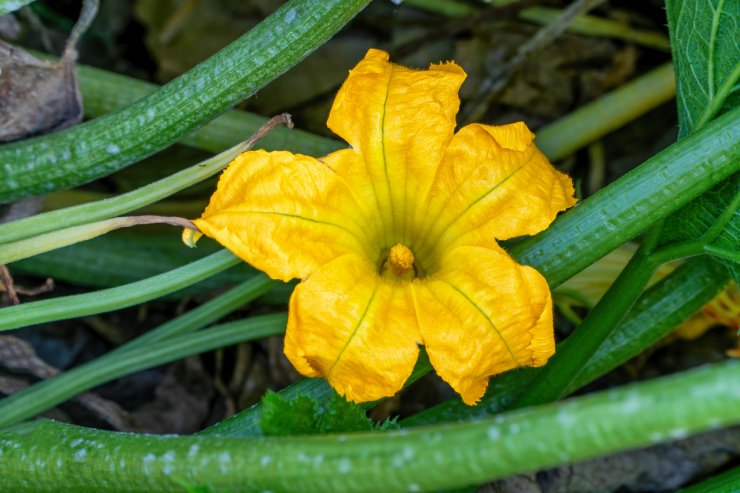
Summer squash blossom.
Squash Blossoms
If you’ve ever grown zucchini, you’ve probably had more blossoms than you knew what to do with. These buttery yellow flowers are tender and mild.
How to grow: Well, if you’re growing summer squash, you’ve already got them! Pick male blossoms (the ones without tiny fruit behind the flower).
How to use: I love stuffing them with goat cheese and frying them. They’re also good chopped into scrambled eggs or tucked into quesadillas.
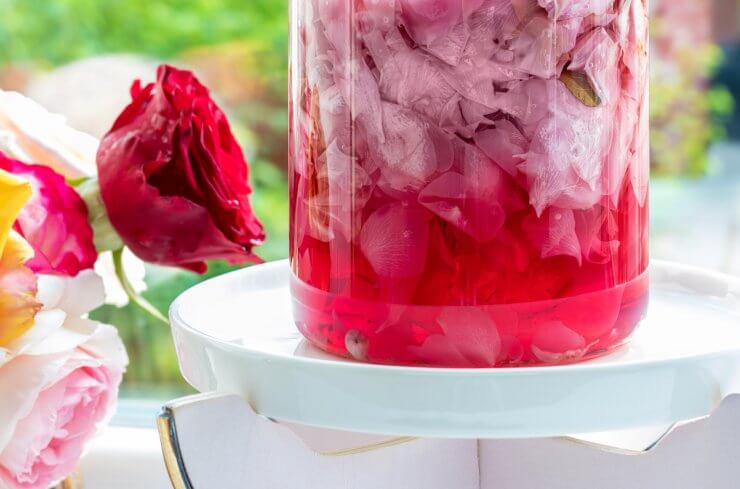
Rose Petals
Yes, roses! Just be sure they’re organically grown and fragrant. The taste varies—some are sweet, some spicy, some even a little citrusy.
How to grow: Choose fragrant, old-fashioned or heirloom varieties. Make sure to skip the chemical sprays if you plan to eat them.
How to use: I use petals to make rose petal jelly, dry them for tea blends, or toss them into desserts, or even salads. Just remember to remove the bitter white base of the petal before using. Here’s how I make rose petal jelly.
Stocks (Matthiola)
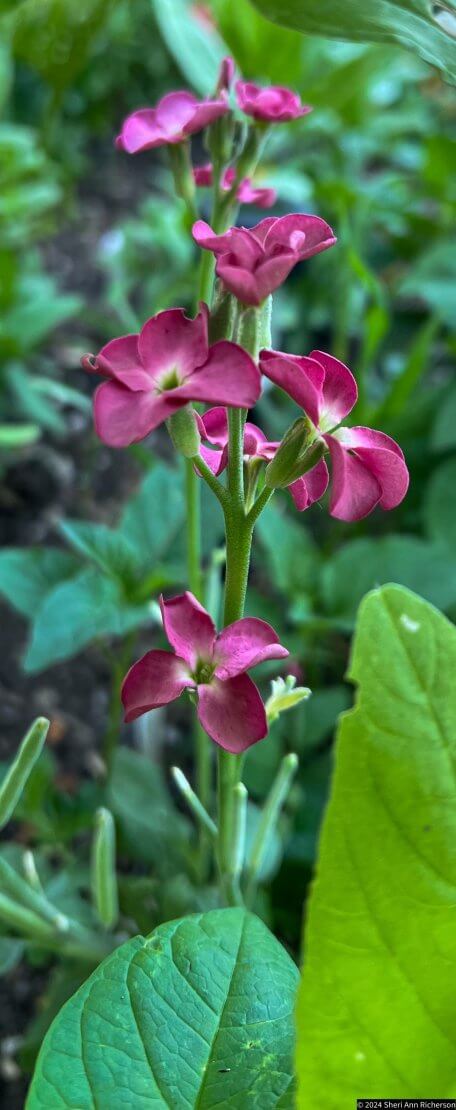
Stocks are one of those old-fashioned garden flowers that bring both charm and fragrance to any growing space. Their spicy-clove scent is absolutely intoxicating, especially on warm spring evenings, and they come in soft pastels that look stunning in edible arrangements.
How to grow: Stocks thrive in cooler temperatures and do best in early spring or fall gardens. Give them full sun and rich, well-draining soil. They work beautifully in containers or tucked into the edges of raised beds.
How to use: The petals are edible and mildly peppery, similar to arugula but with a floral twist. I like to scatter them over salads or pair them with goat cheese on crostini. They’re also beautiful pressed into cakes or frozen into ice cubes for an extra elegant touch. Just be sure to use organically grown plants, as stocks from nurseries are often treated with chemicals not intended for food use.
Harvesting and Using Edible Flowers Safely
Safety first, always. Not all flowers are edible—and some can be downright dangerous. Stick to varieties you’ve researched and positively identified as safe. Avoid flowers from florists or garden centers unless they’re specifically labeled organic and edible (many are treated with chemicals).
Harvest in the morning, as soon as the dew has dried. That’s when the blooms are freshest and most fragrant. The next best time to harvest edible flowers is in the evening, just as the last light begins to fade.
Snip the blooms with scissors and rinse gently under cool running water to remove any bugs or dirt.
Most petals are best used right away, but you can store them in the fridge wrapped in a damp paper towel for a day or two.
You can also dry some of them to save for use later in the season.
If you’ve never eaten a particular flower before, try just a small amount first to make sure you don’t have a reaction. And remember, less is often more when it comes to strong floral flavors.
Creative Ways to Use Edible Flowers
Here’s where the fun really begins. Try these simple ideas:
- Toss petals into a fresh green salad for a pop of color
- Top cakes and cupcakes with whole blooms for a garden party vibe
- Infuse syrups, vinegars, or oils for a floral twist on basics
- Freeze into ice cubes for pretty party drinks
- Make tea blends with dried petals and herbs
- Mix into butter or soft cheeses for a flavorful spread
- Press into cookies or crackers before baking for beautiful, edible art
- Use edible flowers to naturally color icing or foods – Petals from flowers like calendula, hibiscus, or butterfly pea can be infused to tint frostings, drinks, and more without artificial dyes.
You don’t have to be a chef to enjoy edible flowers—you just need a little creativity and a sense of adventure.
Final Thoughts: Grow Beauty, Eat Joyfully
Gardening for food is practical, yes—but it should also be joyful. And edible flowers bring so much joy.
They remind us that food isn’t just fuel—it’s an experience, a celebration, and sometimes even a little bit of art.
So this year, as you plan your food garden, tuck a few flowers in among the rows.
Let the bees come, let the colors bloom, and don’t be afraid to eat something pretty. Your garden—and your plate—will thank you for it.
What are your favorite edible flowers?


